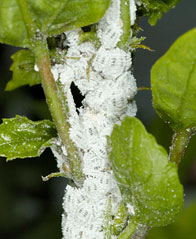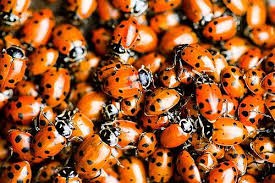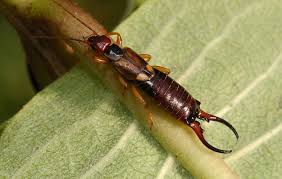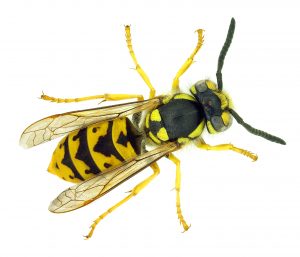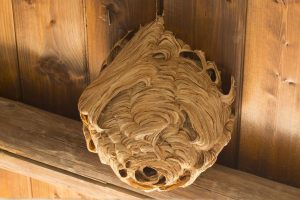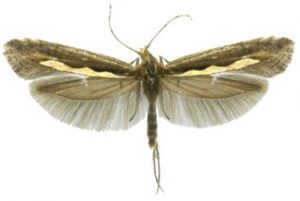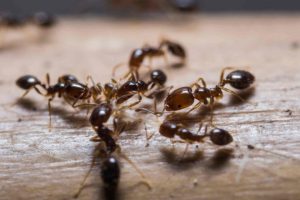 The African crops are known to be damaged by these pesky pests known as armyworm.
The African crops are known to be damaged by these pesky pests known as armyworm.
Why do they attack the crops? How do they invade the farms?
These voracious armyworms are known to ravaging the crop fields.
Let’s have a look at how these pests can cause a nuisance.
Armyworms are nocturnal.
Armyworms feed on leaf tips and along leaf margins. When they eat whole leaves, they can remove them completely or leave only the midribs.
These pests give eggs which are creamy white and dome-shaped, with a flat base. The nuisance caused is by the caterpillar, the larval stage. When newly hatched, the larva is light green with a dark head capsule and measures approximately 1/16 inch long. As the larva feeds, it becomes darker and longer with light colored lines down the sides of its body. The head is unique in that it has a light yellow inverted “Y” on the top. As it matures, it also contains 4 black dots on the end of its abdomen. The fully grown larva is about 1½ inches long. This larva is an extreme nuisance that eats everything it possibly can.
The common armyworm is the more usual pest in spring and early summer. Adult armyworms survive better and produce more eggs when the temperature is at 15°C maximum, and when plants are naturally fertilized. Periods of drought followed by heavy rains and the presence of alternate hosts also sustain the development of armyworms.
The larvae usually feed in the upper portion of the rice canopy on cloudy days or at night; while the adult feeds, mates, and migrates at night and rest in the daytime at the base of the plant.
In dryland fields, armyworm pupa can be found in the soil or at the base of the rice plants. In wetlands, they pupate on the plants or on grassy areas along the field borders.
Since the fall armyworm moth is active very early in the morning and very late in the evening, it can be difficult to identify them. Fall armyworms develop shortly after an adult moth lays her eggs on or near a lawn, which also makes it difficult to prevent them. The moth will often choose areas near healthy, well-irrigated lawns on which to lay her eggs, making your grass the most desirable spot.
When the army worn attack, the pasture patches typically appear browned or burned out resembling drought damage. The damaged patch will increase in size over time, as fall armyworms chew more tender growth. Fall armyworms typically target newly established stands of bermudagrass, winter annuals, fescue, or orchardgrass.
Paddy across 4,000 hectares infested with armyworm
By Veerendra P.M. NOVEMBER 25, 2017 – The Hindu
77,000 hectares were used to grow the crop in Shivamogga
Mythimna Separata, popularly known as armyworm, has begun devouring the paddy crop in the district.
According to a preliminary estimate, paddy crop on more than 4,000 hectares in the district has been infested with armyworm. The worms hide under soil clods and in cracks along the bunds of paddy fields during the day. They are nocturnal and migrate from one field to another at night.
Shivamurthy, a farmer from Veerapura village in Bhadravathi taluk, told The Hindu that the pests were consuming the leaves and grains of the plant and leaving the stem behind. The intensity of the infestation in paddy fields in the command area of Bhadra reservoir is high. In many villages, the crop in the infected field was destroyed in one night.
Fall Armyworms Are Ravaging Crops in Many African Countries
Posted 29 June 2017 – Global Voices
As African economies begin to emerge from the global financial crisis of the last decade, a new threat to the agricultural sector in many countries may slow recovery: the invasion of the fall armyworm (Spodoptera frugiperda).
Originally from the Americas, the fall armyworm was first detected in west and central Africa at the beginning of 2016 (Sao Tome and Principe, Nigeria, Benin, and Togo). About a year later, it was found in Angola, Botswana, Kenya, Malawi, Mozambique, Namibia, Niger, Rwanda, Sierra Leone, South Africa, Tanzania, Uganda, Zambia, and Zimbabwe. And the invasion isn’t showing signs of stopping anytime soon.
The caterpillar invasion has caused terrible damage in the affected countries. As a result, the Food and Agriculture Organization (FAO) convened an emergency meeting in Zimbabwe during which experts from 13 countries gathered to adopt a strategy for fighting this disaster.
To get rid of these pests we have an eco-friendly solution!
C Tech Corporation provides you with Termirepel™ which is an anti-insect aversive. Termirepel™ is manufactured on the basis of green technology. It is durable at extreme climatic conditions such as changes in temperature, rainfall, water pressure etc.
Our product is ROHS, ROHS2, ISO 9001:2000, ISO 14001:1996, APVMA, NEA complaint and FIFRA exempted. Our product will not kill the targeted as well as non-targeted species but only repel which helps in maintaining the ecological balance of the earth.
Termirepel™ is available in three basic forms: Masterbatch, liquid concentrate, and lacquer.
 Termirepel™ Masterbatch is specially made for polymeric applications and used as additives in their processing time. It can be incorporated into the polymeric applications like the agricultural films and mulches, irrigation pipes, tree guards, greenhouse films etc. used for crop cultivation purpose. The product can be incorporated into the cables, polymeric parts from tractors and other applications used for agriculture.
Termirepel™ Masterbatch is specially made for polymeric applications and used as additives in their processing time. It can be incorporated into the polymeric applications like the agricultural films and mulches, irrigation pipes, tree guards, greenhouse films etc. used for crop cultivation purpose. The product can be incorporated into the cables, polymeric parts from tractors and other applications used for agriculture.
Termirepel™ liquid concentrate is to be mixed in paints in proper proportion and can be applied on the concrete fences around farms. It can be used on the interior and exterior of storehouses used to store food grains and other agricultural produce.
Termirepel™ lacquer form can be directly applied to the applications such as wooden fences, already pipes, wires, cables, etc.
Contact us at technical.martketing@ctechcorporation.com to get best solutions on pest nuisance
Also visit our websites:
http://www.ctechcorporation.com/
http://www.rodrepel.com/
http://www.termirepel.com/
http://www.combirepel.com/
Follow our Facebook pages at:
1] https://www.facebook.com/Combirepel-411710912249274/
2] https://www.facebook.com/Termirepel-104225413091251/
3] https://www.facebook.com/Rodrepel-120734974768048/
Follow us on our Twitter pages at:
1] https://twitter.com/rodrepel
2] https://twitter.com/termirepel
3] https://twitter.com/combirepel














